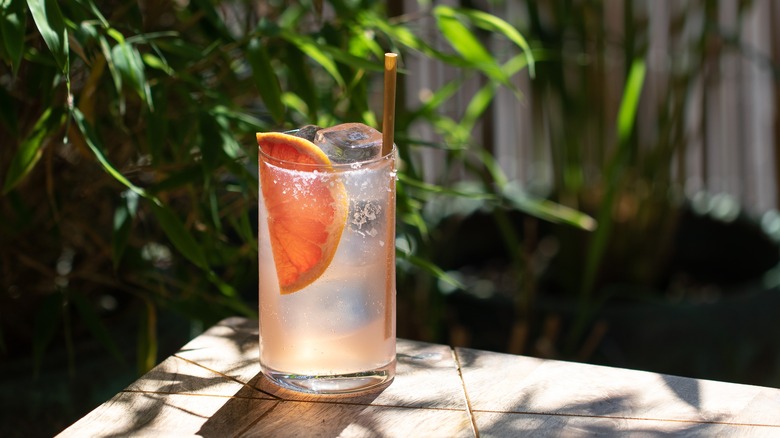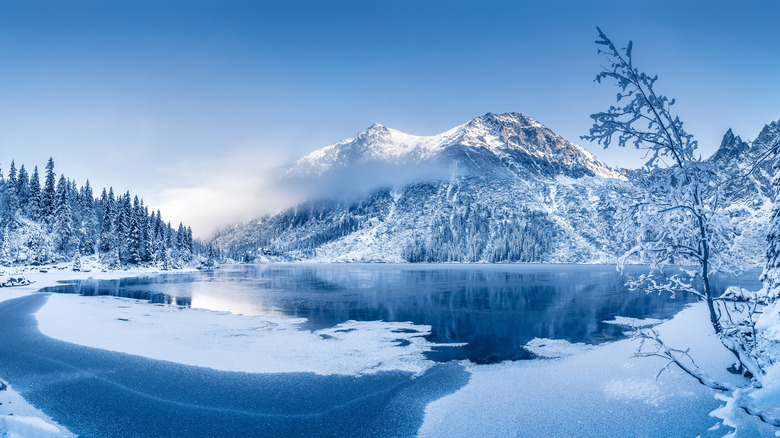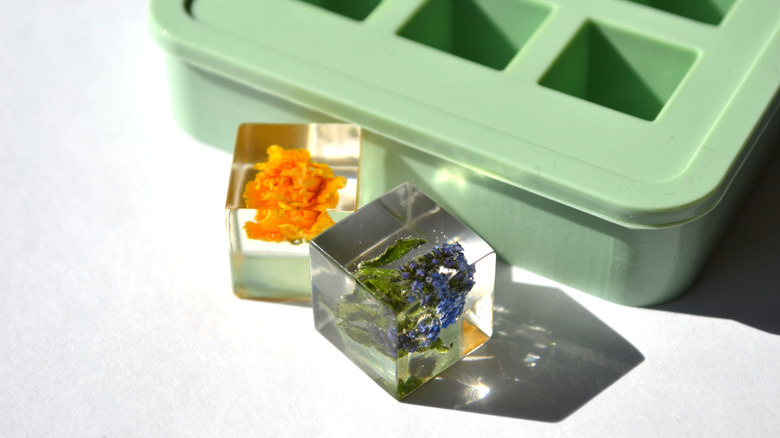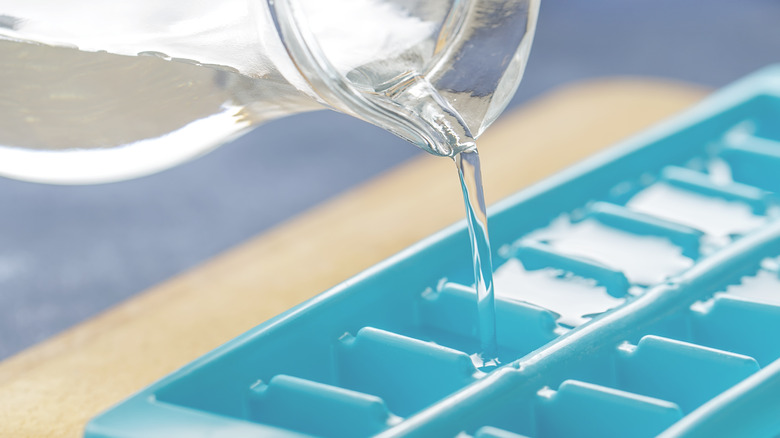The Trick To Making Perfectly Clear Ice Cubes For Your Cocktails
We may receive a commission on purchases made from links.
When you look over a cocktail menu, you're probably contemplating whether to stray from your normal gin martini into the world of bourbon, wondering what "becherovka" is, or debating if $25 is too much to spend on one drink. But, if you aren't already thinking about the ice, it's time to start.
In a Tasting Table survey, our readers said they prefer a glass full of tiny ice cubes or ice chunks for their cocktails. But, "crushed" isn't how today's mixologists are taking their ice — they want it crystal clear. For one, clear ice just looks better. It's an immediately impressive, aesthetically appealing sign that your bartender has chops, and the bar they're working at knows its stuff.
Plus, achieving clear ice is a science-meets-art feat that actually makes a difference in the quality of your drink. Different shapes and sizes of ice melt at different rates, which affects dilution, temperature, viscosity, and flavor. Ice clarity can make or break a cocktail in the same way. How? Clear ice is actually denser than cloudy ice. Cloudiness in ice is caused by trapped air bubbles. Denser, clear ice melts slower and more consistently, which makes it more predictable for mixologists trying to calculate a perfect cocktail experience.
If you want to enjoy your cocktail slowly and enjoy every sip from start to finish, you should make clear ice. Here's how to do it at home.
Let us be crystal clear
In nature, the surface of ponds and lakes is the first to freeze for a reason. The bottoms of those bodies of water are naturally warmed by the earth, making the bottoms slightly warmer than the tops. For this reason, natural bodies of water freeze in a singular direction, from the top down. Cocktail authority Camper English was the first to discover "directional freezing" and its role in creating clear ice. In directional freezing, all the trapped air in water gets forced out in one direction as the liquid solidifies into ice. "It's a huge aesthetic difference that can't be discounted," maintains English (via Punch). "Styrofoam cup versus crystal glassware. It makes for a completely different experience."
According to the expert, you can make clear ice balls at home in a thermos. Just grab a 2.5-inch ice ball mold, fill it with tap water, put the mold in the thermos, and pop it all in the freezer, explains English (via Alcademics). It freezes solid in 24 hours. As an alternative at-home method, you can also make a big block of clear ice in a small hard plastic cooler, the kind you might bring on a camping trip. To do it, fill a (cleaned, sterilized) cooler with hot water. Then, place the entire cooler in the freezer to harden completely — this takes 1 to 3 days. Once it's totally frozen, you can carve the block into clear cubes using a bread knife and a mallet.
Uncomplicated cocktails benefit most from clear ice
If you've ever visited Katana Kitten in Manhattan's West Village or any other decorated cocktail bar, then you've likely spotted an "ice chef" artfully carving crystal clear cubes and spheres out of massive blocks of ice. But, if you're like most home bartenders, then there's probably a pretty low probability that you're versed in Japanese ice carving, and you won't be making special clear ice for every single drink you enjoy at home. So, which cocktails will benefit most from clear ice?
Aesthetics aside, the whole technical appeal of clear ice is its slow dilution. Opt for clear ice with any drink you plan to sip over an extended time period, like anything "neat." Maximum chill with slow dilution works best for spirit-forward, unsweetened cocktails like Boulevardiers, Aviations, and Old Fashioneds. More nuanced drinks like Negronis and Martinis rely on carefully measured proportions that let the ingredients speak for themselves, so avoiding over-dilution is essential here — use clear ice for these, too.
To that effect, if you're looking for the slowest melt possible, opt for a spherical clear ice mold instead of a cube shape. (It's time to get mathematical.) Geometrically speaking, spheres have a smaller surface-area-to-volume ratio than cubes. That lower ratio makes for a slower melt, which means less dilution and a longer length of chill. But, is it always necessary to purchase a special "clear ice mold," or can you use a regular ice tray to achieve crystal clarity?
Where to buy the good stuff
In traditional ice cube trays, each cube is separated, meaning each individual cube is frozen from the top, bottom, and sides. That's where multi-directional freezing (and cloudy ice) comes in. However, boiled distilled water freezes into perfectly clear ice cubes, because boiling gets rid of the oxygen within the water. To do it, pour the water, still hot, into an ice cube tray. Make sure the tray sits flat in the freezer, then allow it to freeze slowly. After about 24 hours, pop those crystal clear ice cubes out of the tray and store them in an airtight container in the freezer to protect them from cracking, or absorbing any impurities or "freezer smells."
If this seems like too many extra steps, you can also use a clear ice cube mold specially designed to achieve directional freezing. This ClearlyFrozen model which forces directional freezing runs for $37.99. World-renowned cocktail giant Death & Co. makes a mini ice maker appliance that turns tap water into six clear ice spheres and runs for $85. You can also get a silicone ice mold from Target that'll make mostly-clear ice for less than $10. It really just depends on how important clear ice is to you, and how often you plan to make it.



